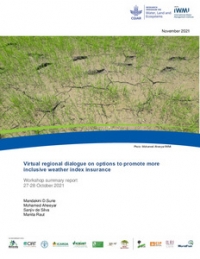The first global-scale assessment of environmental flows (EF) and environmental water scarcity was based on hydrological principles and ecological perceptions, used WaterGap model (Doll et al, 2003) simulated river flow data at the grid of 0.5 degree, focused on surface water only and considered, effectively, just one global ecosystem scenario - that of “fair” ecosystems’ condition. This project revisits this work and considers the following: 1. Bringing larger environmental aspects and concepts of Ecosystem Services (ESS) into the picture; the methodology will try and identify how to relate explicitly ESS with EF, and if there is an optimal point in development (based on the maximum of ESSs from developed and natural ES) beyond which it is not justified 2. Using more accurate, more recent and more spatially resolute hydrological data, provided by several global hydrology models. Amongst others, we will aim to work with partners, who are developing models with 5’ spatial resolution 3. Looking into possibilities of establishing environmental water targets and indicators for both surface and groundwater 4. Aim is to develop a monitoring tool that reflects the environmental status of global freshwater resources. This will help to develop clear link with developing water targets and indicators for the SDGs (UN-WATER Discussion document, 2013).
menu





/index.jpg?itok=EzuBHOXY&c=feafd7f5ab7d60c363652d23929d0aee)









